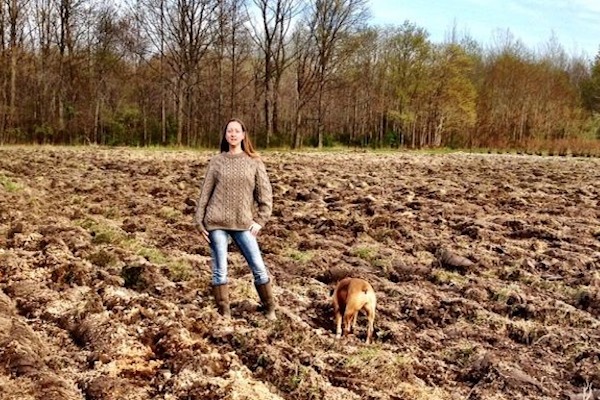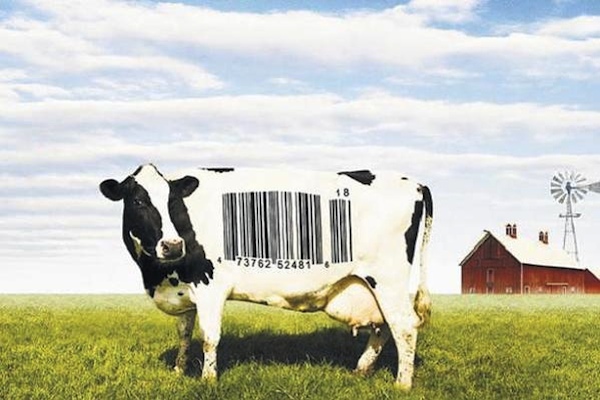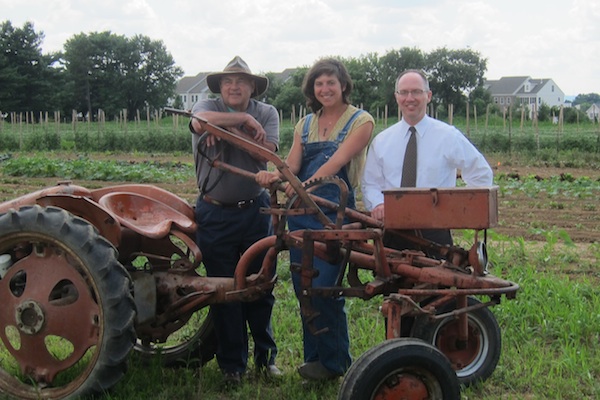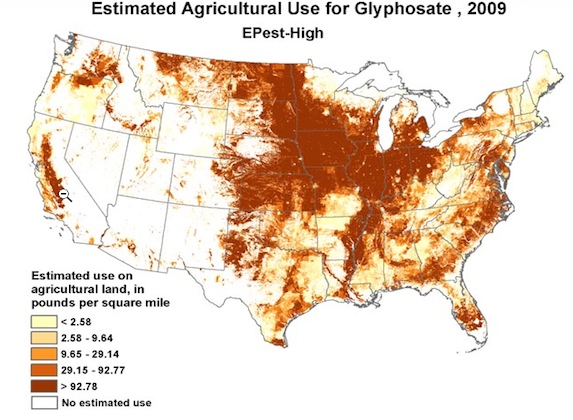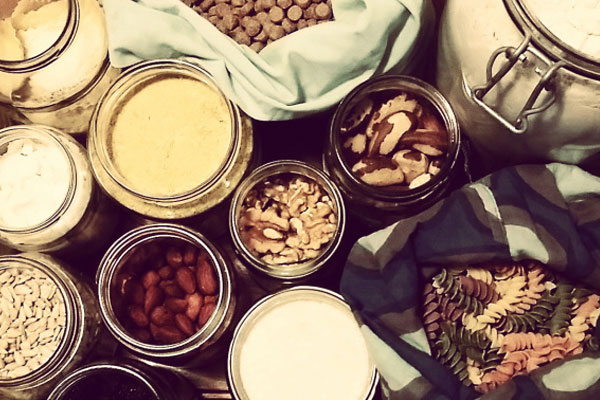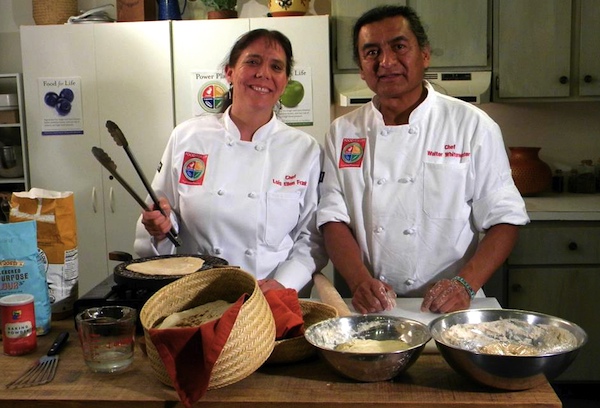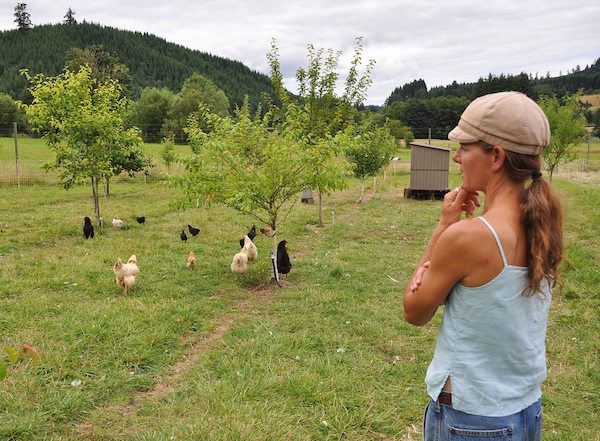Karen Warner founded Big Head Farm in 2009, located in southwest Michigan. After experiencing the challenges of starting a farm and creating a viable business, Warner began thinking through ways to support new farmers and to protect small to mid-sized farms from going out of production. Warner is currently working to advance a farm accelerator model that would give farmers the resources and support they need to succeed from start-up to retirement.
Continue reading... →Many food items that are produced in the United States are full of additives and chemicals. Unfortunately, Americans are eating lab-created and nutrient-stripped food that somehow got twisted around into being called healthy or normal. Because the food industry is a big business, many probably don’t know the facts about how their food is produced, and what ingredients in that food can do to our bodies.
Continue reading... →Rodale Institute and St. Luke’s University Health Network launched a true farm to hospital food program. The Anderson Campus at St. Luke’s has over 300 acres of farmland, much of which had historically been farmed conventionally with crops like corn and soy. The hospital administration recognized the impact that providing fresh, local organic produce could have on patient health and approached Rodale Institute to transition the land to organic and farm vegetables to be used in patient meals as well as in the cafeteria.
Continue reading... →“Glyphosate is the backbone of our current agricultural system that supplies us with toxic food, water and air. We aim to ban glyphosate by allowing the public to inform themselves about what levels of glyphosate are found in their own and their family’s bodies. Feed The World will also give a platform to profitable, agriculture alternatives that allow farmers, businesses and governments to change direction towards a better non-toxic future for our children.” – Henry Rowlands, Director of Feed The World
Continue reading... →In order to run my zero-waste kitchen, I need to plan my shopping trips a bit. Before heading to the farmer’s market or grocery store, I take a look at the running shopping list on my phone and add a few things we might need. List in hand, I gather my zero-waste equipment. The list helps me figure out what I’ll need and while shopping, I stick closely to it. 1. Glass jars I use my glass jars at the bulk bins. Get the weight on these before you fill them up. At some stores, customer service will weigh them for you and mark the tare on them. Other stores set out scales and you weigh the jars yourself. The cashier will deduct the weight of the jar from your food when checking you out so you pay for weight of the food only. Lately I’ve been taking jars to the farmer’s market for berries. That way I bring home whole fruit rather than jam. A health food store in my daughter’s university town, Guelph, Ontario, Stone Store, doesn’t charge for all packaging but it does charge for nut butter containers, which I find brilliant. How many students will forget a jar […]
Continue reading... →For Santa Fe’s Red Mesa Cuisine, cooking with Native American foods means supporting native cultural traditions, which, in turn, supports a healthy planet. Get a taste of America’s most unique ingredients. Award winning Santa Fe-based chef, author, Native foods historian, culinary anthropologist, and photographer Lois Ellen Frank, Ph.D. gave the keynote address at FUZE.SW 2014, a weekend-long celebration of food with a focus on Native American cuisine, in Santa Fe, New Mexico.
Continue reading... →You probably know the saying by now: anything a man can do a woman can do better. And usually she does it with less complaining, more style, and let’s be totally honest, a whole lot more grace. Even farming. Yep, the new face of farmers in the U.S. might just pleasantly surprise you.
Continue reading... →We’ll admit that we only have the vaguest idea of what the media maven has been up to since she ended her reign as the queen of daytime talk (we think we get OWN—like on channel 176 or something). But now comes news that Oprah might be getting into the organics game.
According to recent filings with the U.S. Patent and Trademark office, Oprah—or, no doubt, her lawyers—has registered trademarks for “Oprah’s Organics,” “Oprah’s Farm” and “Oprah’s Harvest,” reports the New York Post.
A PR rep seemed to downplay the story, saying: “The trademarks were filed for Oprah’s farm on Maui to enable the farm to grow and distribute produce on Maui and throughout the Hawaiian I
Continue reading... →The U.S. industrial food and farming system, dominated by fast food restaurants and processed, chemical-laden food, has precipitated a public health crisis. Although nutritionists recommend that consumers avoid eating unhealthy junk foods, every day 75 million Americans “supersize” themselves and damage their health by eating at McDonald’s or other fast food restaurants. Forty percent of American meals are now purchased and consumed outside the home, typically consisting of high-calorie, low-nutrition items such as soft drinks, French fries, and low-grade meat, laced with fat, cheap sweeteners, pesticide residues, chemical additives, and salt. We have become a Fast Food Nation of bulging waistlines and high blood pressure.
Recent studies link pesticide residues and chemical additives like MSG in processed foods and restaurant fare to hormone disruption and obesity. No wonder 60% percent of Americans are either overweight or obese. One in every three children born since the year 2000 will develop diabetes in their lifetime. Diet-related obesity, diabetes, and heart disease are now the nation’s number one public health problem, generating an estimated $150 billion in health care costs every year. Millions of youth and adults have literally become addicted to the chemically enhanced junk food served in fast food restaurants, school lunchrooms, and institutional cafeterias. In 1972, U.S. consumers spent three billion dollars a year on fast food – today we spend more than $110 billion.
The junk food industry, now under attack by public health advocates and parents, finds itself in a similar position to where the tobacco industry was in the 1990s. After decades of lies and industry propaganda, the truth is finally coming out: junk food kills.
Indeed, despite individual efforts by some states to tax soda pop, require healthier school lunches, or mandate calorie information in chain restaurants, obesity rates in the United States are growing. It is time for the federal government to stop subsiding, with billions of dollars of public tax money, the factory-farmed crops and animal products (corn, soybeans, cotton, dairy, and meat) that create the artificially low prices that prop up the nation’s junk food industry.
Continue reading... →